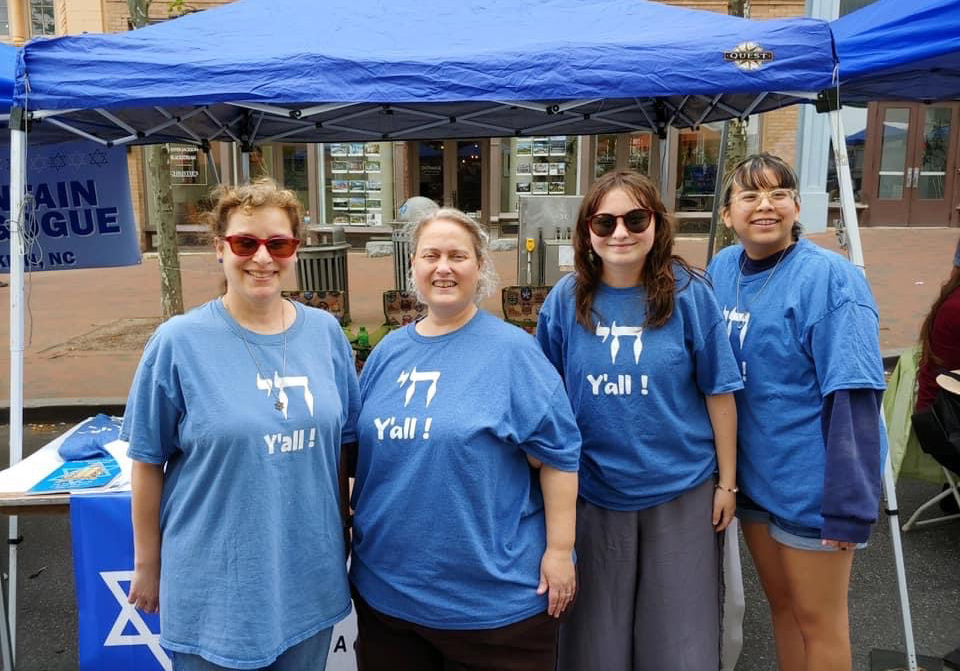
By A.J. Kaufman
Perched on a small hill above Highway 126, just east of Blountville, is a regal property with a proud history that many wouldn’t otherwise know.
B’nai Sholom Congregation is the only Jewish synagogue across several hundred miles — between Knoxville and Roanoke — and thus serves a vital purpose for Jews in Appalachia.
The synagogue is affiliated with the liberal-leaning Union for Reform Judaism, though all Jewish denominations are welcome and aspects of many prayers lean more conservative in approach.
B’nai Sholom has many traditions, with one being their annual Hanukkah party, occurring this year on Dec. 18. Attendees sing songs, pray, enjoy fellowship, and bring their own menorah and candles to light for the annual eight-night celebration.
In the past, the synagogue’s community events included volunteering at Johnson City Medical Center on Christmas Day, game nights, potluck meals, festivals, and other social gatherings, like bowling and movies. They also display a menorah and dreidel at the famous “Speedway in Lights” this time of year in Bristol.
“I think we are a comfortable place,” B’nai Sholom Co-President Rhona Hurwitz explained to the News & Neighbor. “Everybody and anybody is welcome to attend our events or check us out, if they’re interested in Judaism; you don’t have to be Jewish. But to be a member, you have to be Jewish.”
The five core tenets long espoused by B’nai Sholom include the following:
•Maintain a house for worship for adherents of the Jewish faith;
•Provide an opportunity for religious education;
•Provide a place for social as well as religious contacts for Jewish residents;
•To alleviate the wants of the poor and needy who may be among us;
•To maintain the Jewish cemetery in Bristol.
B’nai Sholom currently enjoys leadership from a student rabbi, who visits every other week from New York City during the academic year. A longstanding rabbi endowment fund helps fund these efforts.
Today, the temple counts a total of 35 member families. After being closed for about two years due to COVID-19, the building fully reopened earlier this year, based on the very high vaccination rate for people over age 65 in Washington County.
Although most members reside in the Tri-Cities, some people travel in for worship services — especially on the High Holy Days — from outlying areas or, in recent years, join via Zoom from Southwest Virginia, and parts of Kentucky and North Carolina.
Many members are also transplants originally from elsewhere. Some have even moved to larger cities and still pay dues.
“Temple, for me, is a place of familiarity, community and worship,” Johnson City resident Jeanna LaBossiere explained. “Living in an area with little religious diversity, I find it important to maintain a place for my family to find and create the same sentiments.”
A brief history shows that over the years, B’nai Sholom evolved similarly to East Tennessee as a whole. Starting in the 19th century, it was made up of European immigrants.
Jews in the Tri-Cities moved to support an active worship location by organizing B’nai Sholom — the “House of Peace” — in 1904 and began meeting in downtown Bristol.
The following year, the group bought land for a cemetery in Bristol, Virginia, as the twin towns emerged as the largest Jewish community in the Tri-Cities region. The cemetery remains at the same location today. Hurwitz officiates at funerals when a rabbi is not available.
A commitment to Orthodox Judaism (more traditional and religious) made B’nai Sholom different from many small Southern congregations, which usually adopted the less-strict Reform Judaism model. As more Jewish professionals settled in the area during the last 60-70 years, the small congregation adopted more inclusive religious practices.
In the 1950s, members sought a new home for the congregation and bought the aforementioned 15-acres of land near Blountville. The project was completed in 1958.
Also following World War II, Jews continued to settle in Northeast Tennessee. No longer in the merchant class, they likely were attracted by the area’s emerging opportunities in business, medicine and academia, particularly at East Tennessee State University.
Again bucking the trend, while Southern Jewish communities’ populations declined in the ensuing decades, the Tri-Cities Jewish community grew. Roughly 200 Jews lived in the area by 1980, a number that’s surely increased, though not enormously.
“There are not a lot of opportunities in the area for Jewish culture and being Jewish as a group, so it’s nice to have a place where we can get together,” said B’nai Sholom Co-President Stephanie Smith, who has two high school-age kids. “So few Jewish children here have any other interaction with Jews, so having the synagogue and a place to learn about Judaism is really important.”
Hanukkah is now on the horizon. The holiday commemorates the Jews’ successful rebellion during the Maccabean revolt of nearly 2,200 years ago. The rededication of the second temple occurred after the victories.
Each of the eight nights of lighting the menorah represent that a one-day supply of oil miraculously lasted eight for a small group of Jewish people.




